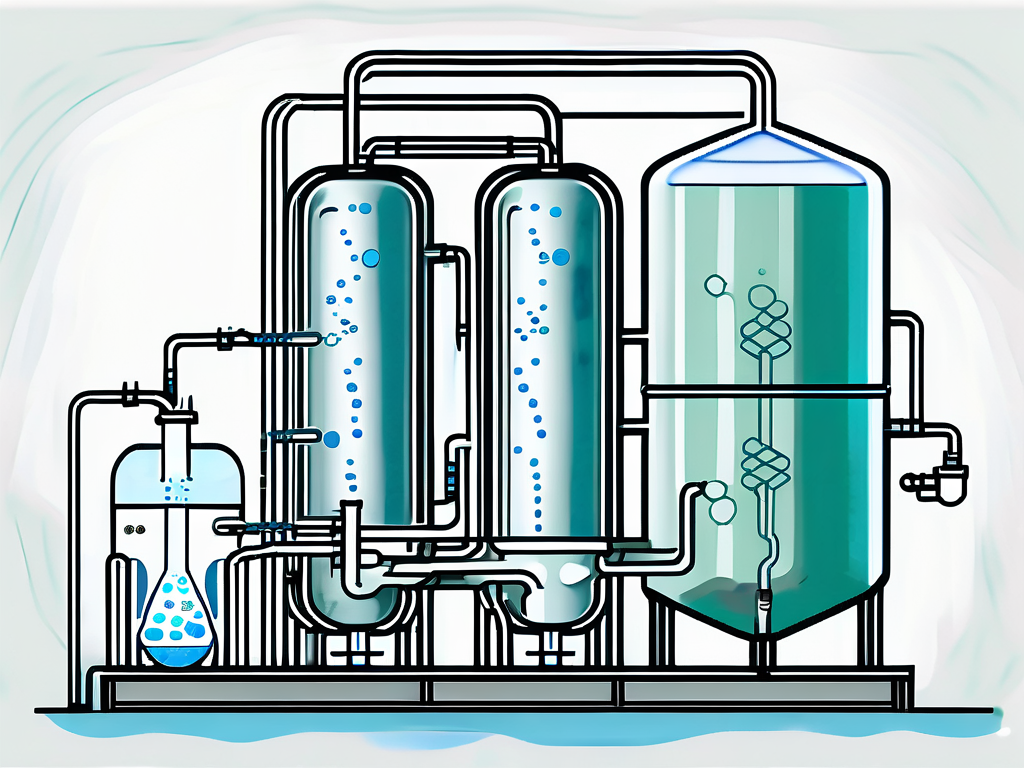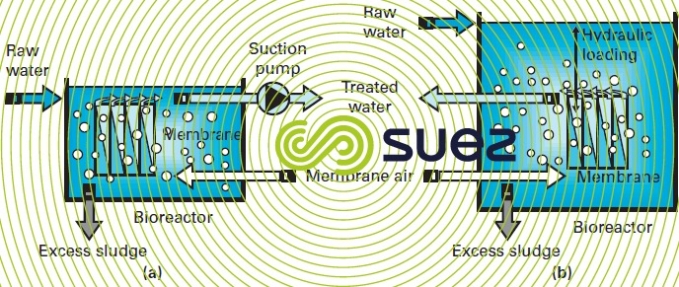Recognizing Membrane Bioreactors: The Future of Wastewater Treatment
Membrane bioreactors (MBRs) represent a notable development in the field of wastewater therapy, incorporating organic procedures with innovative membrane filtering to improve effluent quality. As international water shortage and rigorous regulative frameworks come to be significantly pushing problems, MBR modern technology supplies an efficient feedback via its ability to decrease impact and enhance source healing. The fostering of MBRs is not without its difficulties, which warrant cautious consideration. What are the vital variables influencing their application and long-term practicality in numerous contexts? The responses might reshape our technique to wastewater management.
What Are Membrane Bioreactors?

The core elements of MBR systems include a bioreactor where microbial activity happens and a membrane device that filterings system the mixed liquor. This double functionality enables the synchronised deterioration of raw material and solid-liquid splitting up in a solitary action. MBRs can run in both submerged and exterior configurations, with immersed systems being much more typical as a result of their small style and operational effectiveness.
The fostering of MBR modern technology has actually obtained grip in different applications, varying from community wastewater therapy to industrial effluent administration. MBRs are especially beneficial in scenarios where room is stringent or limited effluent top quality requirements should be satisfied. By maintaining a high concentration of microbes within the bioreactor, MBRs boost the deterioration of organic contaminants, therefore producing higher treatment efficiencies compared to standard methods.
Key Advantages of MBR Technology
The assimilation of organic therapy with membrane layer filtering in MBR systems offers various benefits that set it aside from standard wastewater treatment approaches. Among the primary advantages is the improved effluent quality. MBRs successfully get rid of suspended pathogens and solids, attaining greater degrees of filtration that meet rigorous discharge standards and promote water reuse applications.

One more significant benefit is the decreased sludge manufacturing. MBR systems produce less excess sludge, bring about reduced disposal prices and a decrease in environmental impact. The shut nature of the membrane layer system reduces the danger of smell exhausts and boosts overall process control.
Finally, MBRs are versatile and functional, making them ideal for numerous wastewater types, including commercial and community resources. The ability to integrate with innovative therapy technologies even more enhances their effectiveness, making MBRs an appealing option for the future of wastewater administration.
Difficulties and Limitations of MBRs
While MBR innovation offers various advantages, it additionally encounters a number of obstacles and constraints that can affect its extensive adoption. One considerable challenge is the high capital and operational prices connected with MBR systems. The preliminary financial investment for membrane layer materials and the essential facilities can be substantial, making it less available click here for more info for smaller sectors or towns.
Additionally, membrane layer fouling remains a critical concern that can decrease system performance and boost upkeep needs. Fouling occurs when solids, raw material, or bacteria build up on the membrane layer surface area, leading to lowered permeability and calling for frequent cleansing or substitute.
An additional restriction includes the intricacy of the technology. MBR systems call for experienced employees for operation and upkeep, which can be an obstacle in areas with restricted technical competence. In addition, the disposal of spent membrane layers provides ecological worries, as the materials are commonly not biodegradable and can add to waste administration difficulties.
Lastly, while MBRs can efficiently treat a wide variety of wastewater, they might not be appropriate for all applications, particularly those with high concentrations of fats, oils, and oils, requiring further study and development to resolve these constraints.
Applications of Membrane Bioreactors
In various fields, membrane bioreactors (MBRs) have actually become a versatile solution for wastewater treatment (Membrane Bioreactor). Their applications extend metropolitan, industrial, and farming setups, showcasing their flexibility and effectiveness in varied settings. In metropolitan wastewater therapy plants, MBRs substantially boost effluent top quality, enabling water reuse and decreasing the environmental influence of discharged wastewater
Industrially, MBRs are used in food and drink handling, textile manufacturing, and pharmaceutical production, where they properly treat high-strength waste streams. Their ability to handle differing and changing tons pollutant concentrations makes them especially valuable in these fields. Additionally, MBRs facilitate the removal of pathogens, put on hold solids, and raw material, adding to conformity with rigid discharge regulations.
In farming, MBRs are significantly made use of for dealing with agricultural runoff and livestock wastewater, allowing the recovery of nutrients for fertilizer production. They additionally aid in the treatment of greywater for watering, promoting lasting water administration techniques.
The adaptability of MBRs is more shown by their integration with various other innovations, such as anaerobic food digestion and progressed oxidation processes, boosting overall efficiency and resource healing in wastewater therapy systems.
The Future of Wastewater Treatment
Developments in modern technology and a growing emphasis on sustainability are shaping the future of wastewater treatment. Membrane bioreactors (MBRs) exemplify this change by incorporating biological treatment processes with membrane filtration, leading to top notch effluent suitable for reuse. The fad towards circular economies is triggering centers to take on MBRs for their capacity to recuperate sources, such as water and nutrients, from wastewater.
Developments in membrane products and setup are enhancing the effectiveness and long life of MBR systems, minimizing functional expenses and energy intake. Smart innovation combination, consisting of real-time tracking and automated control systems, is more optimizing performance and enabling predictive upkeep, therefore lessening downtime.
Moreover, regulatory stress and societal expectations are pushing towns and sectors to take on more sustainable techniques. Membrane Bioreactor. The change towards decentralized wastewater treatment solutions is obtaining traction, enabling localized therapy that lowers transport expenses and energy usage
Final Thought
Membrane bioreactors (MBRs) stand for a transformative method to wastewater therapy, integrating biological processes with innovative membrane modern technology. The advantages of MBRs, including boosted effluent top quality, lowered spatial requirements, and reduced sludge manufacturing, position them as a viable remedy amid expanding urbanization visite site and more stringent environmental policies. Regardless of existing challenges, the ongoing development in membrane layer products and operational methods promises to boost the efficacy and adoption of MBRs, guaranteeing their crucial role in the future of lasting wastewater management.
Membrane bioreactors (MBRs) represent a noteworthy innovation in the area of wastewater therapy, incorporating organic procedures with advanced membrane filtering to boost effluent top quality.Membrane layer bioreactors (MBRs) integrate biological treatment processes with membrane layer purification to properly treat wastewater.The assimilation of biological treatment see this with membrane purification in MBR systems provides numerous benefits that establish it apart from typical wastewater therapy approaches. Membrane bioreactors (MBRs) exhibit this change by incorporating biological treatment procedures with membrane layer filtering, resulting in high-grade effluent ideal for reuse.Membrane layer bioreactors (MBRs) represent a transformative method to wastewater therapy, integrating organic processes with innovative membrane technology.
Comments on “Exploring the Environmental Impact of Membrane Bioreactor in Wastewater Treatment”